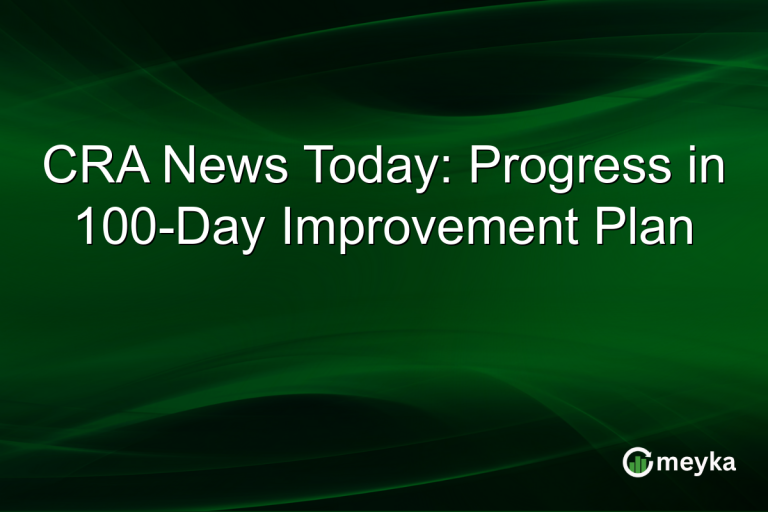CBO Revises Trump Tariff Impact, Cutting Deficit Estimate by $1 Trillion
The Congressional Budget Office (CBO) has released a major update on the impact of former President Donald Trump’s tariff plan. The new numbers are surprising. The CBO now says that tariffs would reduce the U.S. federal deficit by $1 trillion less than it first estimated. This change shakes up the debate in Washington and among global markets. We know tariffs affect many things: prices, trade flows, and government revenue. When the CBO revises its forecast, it matters. It tells us how the economy is reacting and what the government’s money picture might look like. And because trade and tariffs touch everyone, from businesses to households, this is something we all should follow.
What the CBO Originally Estimated
Earlier this year, the CBO projected that if Trump-era tariffs stayed in place through 2035, they would reduce the federal budget deficit by roughly $4 trillion over the next decade. That figure included about $3.3 trillion in reduced primary deficits and about $700 billion in savings on interest payments. The assumptions were that tariff collections would rise, imports would shrink, and U.S. borrowing costs would drop. The White House cited these numbers as a win.
But it’s important to note: While the earlier projection sounded large, it also came with risks. The CBO warned that tariffs can push up prices, slow growth, and may not stay in place exactly as assumed.
What Changed in the New CBO Analysis
Now the CBO has revised its outlook down by about $1 trillion. For instance, one recent Reuters report notes the CBO now says tariffs will reduce deficits by about $3 trillion, not $4 trillion.
Why the change? A few things:
- The latest import and tariff revenue data came in weaker than expected.
- Some tariffs face legal and trade-partner challenges, so full enforcement is less certain.
- Economic responses (consumer behaviour, business supply‐chain shifts) changed, altering earlier assumptions.
In plain terms, the CBO says the payoff from tariffs is smaller than its prior model assumed.
Breaking Down the $1 Trillion Revision
Let’s unpack how the revision works:
- One part is tariff revenue. Collections are growing, but not as fast as the initial model assumed. For example, tariff revenue in fiscal year 2025 reached about $195 billion.
- Another part is interest and borrowing cost savings. Because the deficit isn’t shrinking as much as first expected, savings on interest are smaller.
- And then there are economic side-effects. The CBO still estimates tariffs will raise inflation by about 0.4 percentage points in 2025-26 and slow growth slightly.
When you add them up, the reduction in the deficit is still large, but not quite as big, hence the “$1 trillion less” figure.
Impact on the U.S. Economy
The revised estimates reflect real trade-offs for the economy. Here’s what we see:
- Consumers may face higher prices. When imports cost more due to tariffs, businesses often pass some of that cost on.
- Growth may slow. For example, the CBO estimated U.S. real GDP will shrink a bit as a result of tariffs.
- Businesses have to deal with supply-chain changes. Some may shift sourcing, some may invest less.
- Inflation could edge up. The CBO pointed to an average inflation increase of about 0.4% in 2025-26.
In short, we may get a smaller deficit, but at the cost of slightly slower growth and modestly higher prices. For many households and firms, that’s a mixed bag.
Global Trade and Geopolitical Implications
Tariffs don’t just affect the U.S.; they ripple across global trade.
- Trading partners like China, Mexico, and the EU are watching closely. Some may retaliate or seek new deals.
- Supply chains are shifting. With higher tariffs, companies may relocate production or change partners.
- Legal and institutional risks remain: Some U.S. tariffs have been challenged in court, adding uncertainty.
Thus, the CBO’s new forecast doesn’t just reflect U.S. internal numbers; it reflects a global trade ecosystem in flux.
What This Means for Businesses and Consumers
Let’s bring this down to what you might see:
- If you import goods or parts, tariffs may raise your cost base. Some firms will adapt by sourcing elsewhere.
- If you buy goods that face tariffs, prices might creep up.
- If you’re a business investing for the future, the slower-growth signal may affect your planning.
- For consumers, higher prices and slower income growth may mean tighter budgets.
What we want you to remember: Even though the savings to the deficit are large, the economic cost side is real, and you may feel it in day-to-day life.
Risks and Uncertainties
We should not assume this revision is set in stone. Risks remain:
- Trade policy can change quickly. If tariffs are removed or reversed, the CBO’s model breaks.
- Retaliation: Other countries could impose tariffs too, which could hurt U.S. exports and growth.
- Forecasting models like the CBO’s are built on many assumptions. The CBO itself notes “significant uncertainty.”
- If inflation rises more than expected, or supply chains remain disrupted, the cost side could shift upward.
So, while the forecast is helpful, it comes with a warning label.
Conclusion
We have walked through the CBO’s updated tariff outlook. It shows that while the deficit cut remains huge, the full benefit is about $1 trillion smaller than earlier thought. That matters for the national budget, but also for the economy, businesses, and households. If tariffs stay in place and other factors align, we may see significant deficit reduction. But the trade-offs, higher prices, slower growth, and global risks can’t be ignored. As we move forward, we should watch two things closely: whether tariffs remain at their current levels nd how the economy responds. For those of us tracking budgets, trade, and economic health, this CBO update is a very relevant milestone. You’ll want to keep an eye on the next batch of data and policy changes.
FAQS
The CBO says tariffs can bring in more money for the government but also raise prices for consumers. It warns that tariffs may slow the economy and create long-term risks.
Trump’s tariffs make some imported goods cost more, which raises prices for families and businesses. They also push companies to change supply chains and may slow overall economic growth.
Countries with the highest average tariffs include nations like India and some developing economies. They use higher tariffs to protect local industries and control foreign competition in their markets.
Disclaimer:
The content shared by Meyka AI PTY LTD is solely for research and informational purposes. Meyka is not a financial advisory service, and the information provided should not be considered investment or trading advice.






